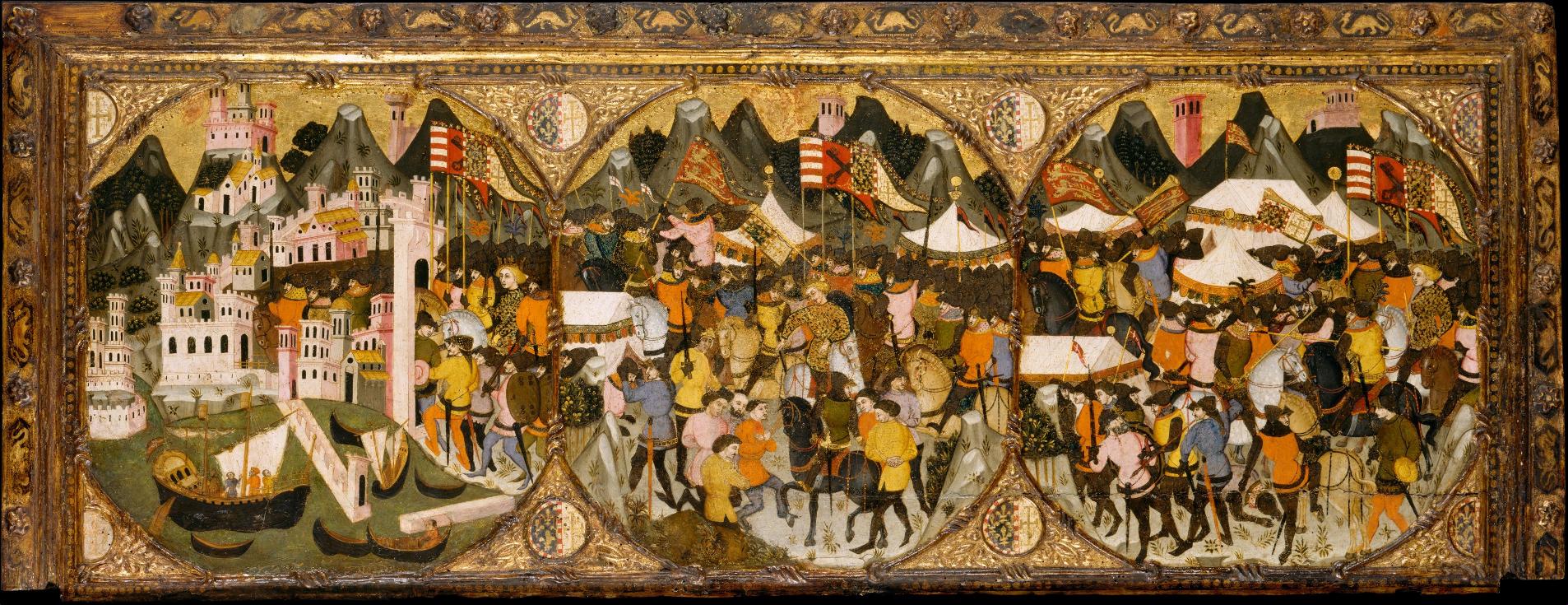
Try Amazon Audible Plus
The 1381 Conquest of Naples by Charles of Durazzo, by the Master c.1400 in Florence

A larger image of The 1381 Conquest of Naples by Charles of Durazzo, by the Master c.1400.


The Conquest of Naples by Charles of Durazzo
Master of Charles of Durazzo (Italian, Florentine, late 14th century)
Date: 1381–82
Medium: Tempera on wood, embossed and gilt ornament
Dimensions: Overall 19 3/8 x 50 3/4 in. (49.2 x 128.9 cm); each painted surface 15 3/4 x 15 in. (40 x 38.1 cm)
Metropolitan Museum of Art, New York. Accession Number: 07.120.1
Painted in Florence about 1400, this elaborately decorated front of a chest (cassone) recounts in three episodes the conquest of Naples by Charles III of Durazzo, who defeated the forces of Otto of Brunswick in 1381. At the right, the armies clash; in the centre, Otto's troops (recognizable by their distinctive haircut) surrender to Charles; at the left, the victors enter the conquered city. The prominent pennants and coats of arms in the spandrels are those of the Durazzo and the kings of Hungary.
The conflict between Queen Joanna I of Naples and Pope Urban VI caused the Pope (as feudal overlord of the kingdom) to declare her dethroned in 1381 and give the kingdom to Charles. He marched on the Kingdom of Naples with a Croatian army, defeated her husband Otto, Duke of Brunswick-Grubenhagen, at San Germano, seized the city and besieged Joanna in the Castel dell'Ovo. After Otto's failed attempt to relieve her, Charles captured her and had her imprisoned at San Fele. Soon afterwards, when news reached Charles that her adopted heir, Louis I of Anjou, was setting out on an expedition to reconquer Naples, Charles had the Queen strangled in prison in 1382. Then he succeeded to the crown.
Charles the Short or Charles of Durazzo (1345 – 24 February 1386) was King of Naples and titular King of Jerusalem from 1382 to 1386 as Charles III, and King of Hungary from 1385 to 1386 as Charles II.
 Braunschweig |
 Charles of Durazzo. |